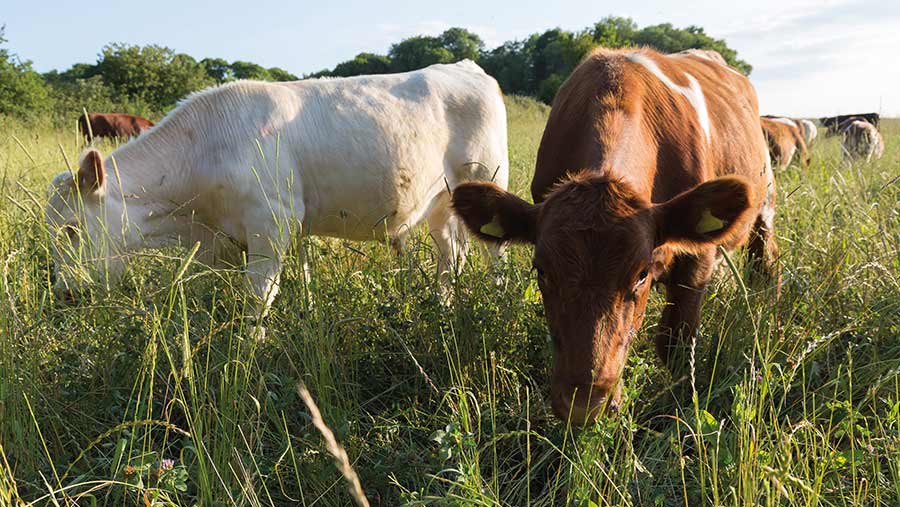7 farmer tips on moving to regenerative farming
 © MAG/Judith Tooth
© MAG/Judith Tooth At a packed Groundswell event on 22 June, a panel of farmers talked to delegates about the challenges and benefits of moving to regenerative agriculture.
Infrastructure and time were two of the key challenges they all faced when transforming their farming systems, but the biggest hurdle was getting started.
See also: Regenerative agriculture: What to avoid and how to start
They shared some tips from their own journeys:
1. Forget what the neighbours are going to think
Angus Dalton said his biggest hurdle was having the confidence to step out of his comfort zone with farming. He said you have to stop worrying about what the neighbours will think of what you’re doing and ask yourself: “What’s the worst that can happen?”.
Mr Dalton, a first-generation dairy farmer who had previously milked three times a day, said once he started realising the power of grass and outwintering animals, the business started making a “serious profit”.
2. Consider other options
Question everything, advised Sam Awdry, who has transitioned his suckler herd from a traditional set-stocked system on grass to high-density rotational grazing, running youngstock on diverse leys.
“Assume you’re wrong in what you’re doing at the moment and look at the other options.”
3. Try things out
Hertfordshire suckler farmer Ian Davis said to bear in mind what works on one farm will not necessarily work on another.
“One of the best ways forward is to make a point of trying to create ‘safe to fail’ areas and trying things out,” he said.
4. Have a plan B
“Always have a plan B, particularly with outwintering,” advised Mr Dalton. “And that plan B could even be a building.”
Mr Awdry added that if you have to allocate a larger paddock for grazing because stock cannot be moved as regularly as you would like, just accept that.
While it will not give optimum results, it must be a manageable system.
5. Accept short-term time investment can save time in the long run
While building infrastructure and using temporary solutions such as electric fencing and mobile troughs can be time consuming and off-putting, the time invested is balanced by reducing the need for tractor-based work such as fertilising, harrowing, and producing winter feed.
6. Learn as you go
Read lots of books, do not be afraid of making mistakes and learning as you go, and find the right people to bounce ideas off, said arable and sheep farmer Anthony Ellis.
When speaking with advisers, take their advice and then make your own mind up, said Mr Dalton.
The panel, who all met via The Farming Forum, recommended using social media to connect with people as well as finding examples and videos with more information.
7. Consider management changes before spending
Depending on timescales, a more diverse sward can be achieved with grazing management before spending money on reseeding or overseeding.
“It’s incredible what seed bank is actually in the soil, and if you just change the management, you’ll see the plants change. It may not happen overnight, it may take two or three years,” said Mr Davis.
He is now seeing plants such as sainfoin, clovers and orchids appear on his farm where he has not planted them.
Good books for learning more about regenerative agriculture
- Dirt to Soil by Gabe Brown (Chelsea Green)
- Holistic Management by Allan Savory and Jody Butterfield (Island Press)
- How to think like a Grazier by Greg Judy
